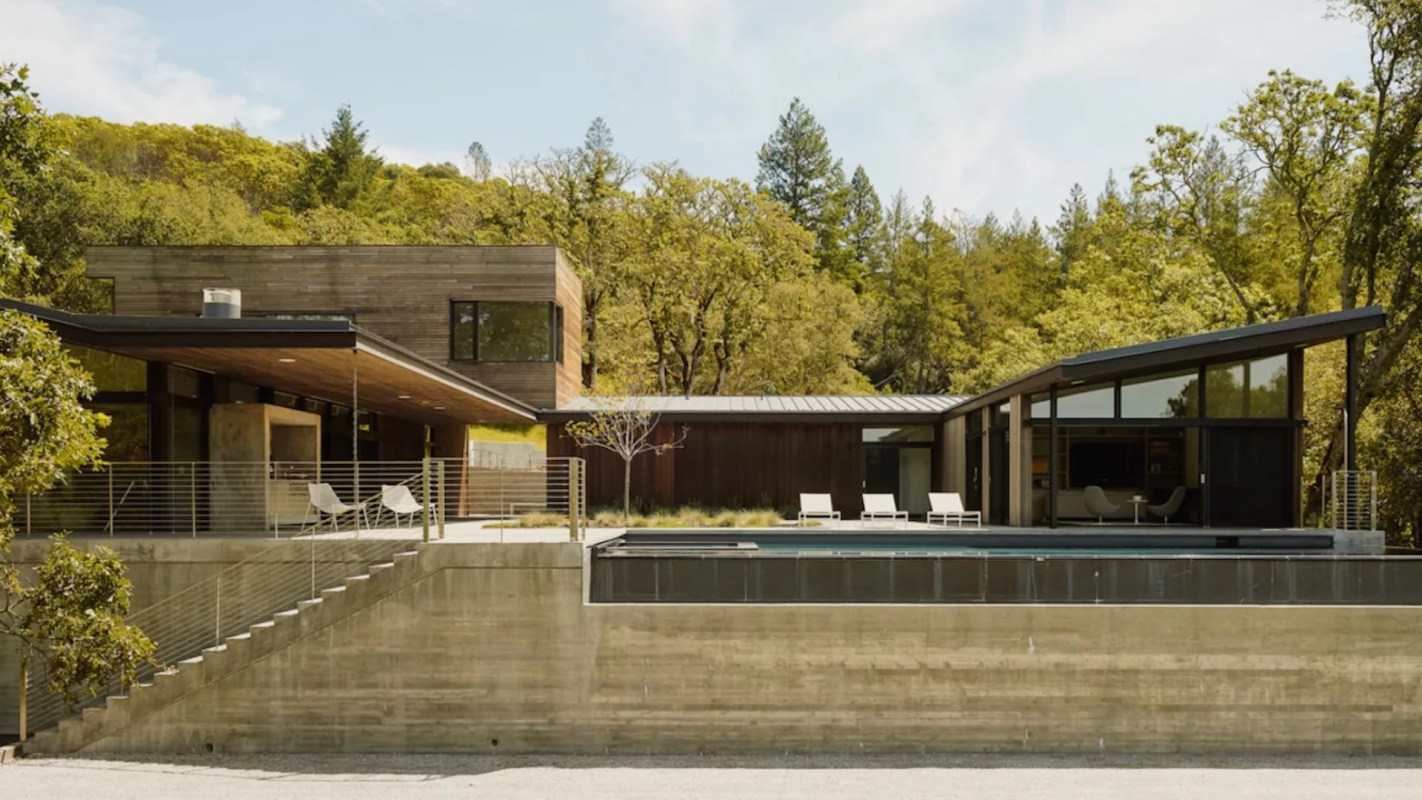After a blazing wildfire ravaged a California landscape in 2017, one home remained largely unscathed thanks to some smart design ideas.
It was October 2017, and a fire moved across Nuns Canyon, just outside of Glen Ellen, California. Sunset sums up the experience of Kyle Pinjuv, a local conservationist, who had been renting a 1950s-era wooden cottage in the area and escaped to safety through the fields of a neighboring vineyard early on October 9.
He told the publication that the fire was about 20 feet from the house when he left and that he knew it wouldn't survive. He was right.
However, another home on the same parcel of land fared much better thanks to some key design elements. In fact, besides some smoke-tinged interiors and a few fire scars on the outside, the home was left unharmed.
The house was gold-level LEED certified. LEED — Leadership in Energy and Environmental Design — is the world's most widely used green building rating system.
According to the architect, Glenda Flaim, some of the house's energy-conscious design aspects helped it better fend off the fire.
For instance, a metal, non-combustible roof prevented embers from catching the home on fire from the top. The home's windows and vents were also thoroughly sealed, which prevented sparks from entering the attic and excess smoke from creeping inside.
In addition, the house utilized flame-resistant Alaskan cedar siding backed by fire-rated gypsum board. Meanwhile, concrete foundation and hardscaping, like a large wall that surrounded the pool, kept the blaze at bay.
"If you look at the aerial pictures of the house, you can see that as the fire approached, it burned the bocce court and the pump house," Flaim told Sunset. "Then it met the concrete retaining wall around the pool and split in two directions around the house."
While the pump house and wells took about a year to rebuild, the interior of the modern eco-friendly home required nothing more than deep cleaning. However, the owners and builders purposely left some fire scars on the outside.
"Our clients didn't want to erase them," Flaim told Sunset. "A scar on your body tells a story of your experience, and it's the same thing with a house. We didn't make it pristine again. We left the signs."
A recent study found that the overheating of our planet was to blame for record-breaking California wildfires in recent years. But the Golden State is not alone — in the first few months of 2024, raging fires ravaged huge swaths of land in the Amazon and Texas, threatening people, wildlife, and landscapes.
Homes with fire-resistant design elements are a smart idea as we face more frequent and damaging wildfires. The good news is that scientists are working hard to find new and better ways to make homes more resistant to fire.
For example, Australian researchers have found a way to turn discarded glass into fire-resistant building claddings. Meanwhile, one company is going old-school by making fire-resistant earthen homes that employ the same construction technique used to make the Great Wall of China.
Join our free newsletter for weekly updates on the coolest innovations improving our lives and saving our planet.









